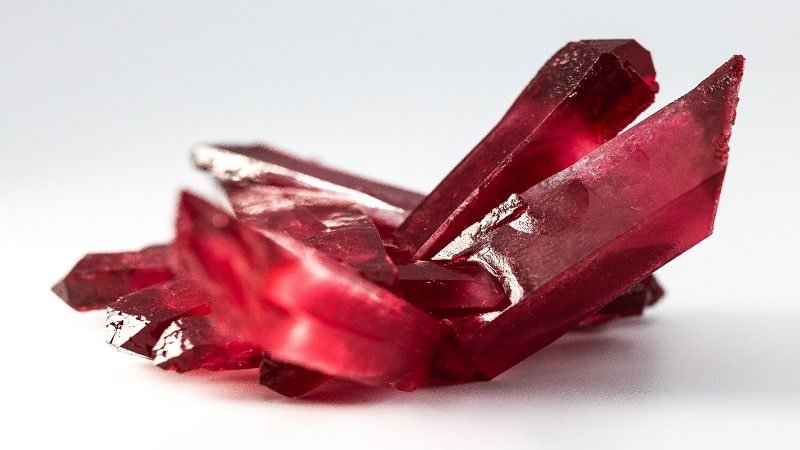How Is Red Beryl Mined?

Red beryl is one of the rarest occurring gemstones of the world. It is said to be the rarest variety of the beryl family, whose better-known types include aquamarine and emerald.
The red beryl gemstone takes its deep cherry red color from trace amounts of manganese involved in the formation process.
According to a survey conducted by The Utah Geological Federation, it is estimated that for every red beryl found; there are 150,000 gem-quality diamonds. Therefore, one can easily assess how rare red beryl is.
One can also deduce the rarity of red beryl from the places it is found. From all over the world, red beryl is found only in three specific locations of North America.
- Utah
- Wildhorse Springs
- Topaz Valley
- Starvation Canyon
- New Mexico
- Beryllium Virgin Prospect
- Black Range
- East Grants Ridge
- Mexico
- San Luis Potosi
And the shocking part is that even at these locations, it isn’t like red beryl is found in abundance. Instead, crystals of red beryl are found in just a few millimetres of length, which are too small in size and imperfect to facet.
So the real question is that then how is red beryl mined?
The answer to this question is not a long or tedious process. It isn’t even a gemstone expedition. According to many reputable industry sources, there is currently no commercial production of gem-quality red beryl worldwide.
Even the owner of the very mine in Utah called The Red Beryl Mine said that there is “no production at the site” and that the respective authorities don’t allow anyone to dig. Hence, this leaves a gaping hole in the production of this rare and valuable gemstone.
Many people doubt whether red beryl is even real even if they do buy it or take an interest in possessing it, given how rare the original stone is. Therefore, let’s look at how the gemstone came to be about and when it was first mined.
History & Mining of Red Beryl
Lamar Hodges is credited with discovering the first red beryl in the Wah Wah Mountains in 1958. Initially, he was prospecting for uranium as his family worked in the deposits, then known as Violet Claims.
However, after a while, in 1976, the Harris family of Delta, Utah, bought the mining rights to the property. Over the next 18 years, the Harris family partners continued to work on the mines more regularly, leading to 60 days a year and during the spring and fall season.
Most of the mining process took place in three open pits of the deposits – lower, middle and upper with ore removal, ultimately reaching depths of about 20m below the surface. Most of the gem-quality red beryl recovered to date has come from the lower pit, where red beryl–containing fractures occur every few meters.
Mining has involved limited blasting in breaking up the host rock, the use of earth-moving equipment (backhoe and bulldozer) to clear access to productive areas, and digging with hand tools to locate and remove the beryl crystals from the fractures.
According to Rex Harris, from 1976 to 1994, the deposit yielded about 0.5 carats of facetable red beryl per ton of ore, with at least 2,000 tons of ore extracted each year. Until 1994, the Harris family remained the single primary source of red beryl that could be marketed for faceting purposes or as mineral specimens.
A recent assessment of the gem material in possession of the Harris family listed over 1,600 carats of faceted stones and 56,000 carats of mixed-grade crystals. About 10% were suitable for cutting. The quantity of material held at the time by GMI has not been made public.
Red beryl is sold as both mineral specimens and faceted gemstones, as well as set in jewelry. The average weight of cut stones has been about 0.20 carat, with approximately 10% of the gemstone production exceeding 1 carat. To date, the largest faceted red beryl weighs 4.5 carats.
For the most part, the material has been marketed in the U.S. and Japan. Small cut goods have been used primarily in custom jewelry, while larger faceted stones have been sold loose to collectors or incorporated into exquisite jewelry pieces.
Final Thoughts
Now that you are clear about how is red beryl mined. You would have an idea why it can’t be mined in bulk as rare things aren’t as easy to find. To put its rarity into perspective, we can conclude that only one red beryl is mined every 150,000 diamonds, and two-carat red beryl is as rare as a 40-carat diamond. Isn’t it mind-boggling?